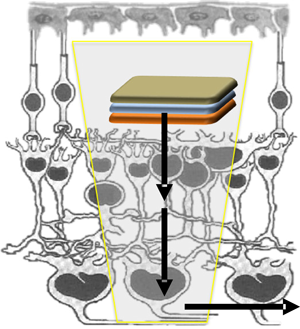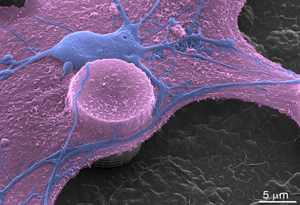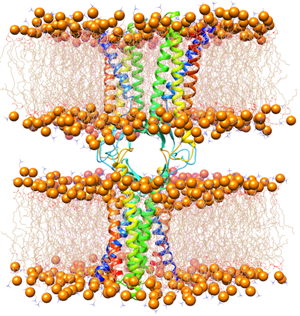
The research focuses on the investigation of semiconductive and conductive conjugated polymers used as interfaces to stimulate neurons with light and on their exploitation for generating organic neuroprostheses for the treatment of genetic retinal degenerative diseases, namely Retinitis pigmentosa (RP) and atrophic age-related macular degeneration (AMD), for which no effective treatment is currently available.
(Click to learn more)

There is an increasing interest toward the use of graphene (G) and G-related materials (GRMs) for biomedical applications, especially for targeting the central nervous system. We are conducting our research within the Graphene Flagship European project, focusing our attention on the interaction between G nanomaterials and primary neurons (Bramini et al, 2016), glial and microglia cells (Chiacchiaretta et al, revised version under evaluation).
(Click to learn more)

The central nervous system is isolated from the circulatory system by the blood-brain barrier (BBB). Hijacking BBB crossing mechanisms represents the ideal route for drug delivery to the brain. Specialized tight-junctions (TJs), constituted of transmembrane proteins called claudins, connect contiguous cells of the barrier and regulate paracellular traffic of hydrophilic solutes.
(Click to learn more)

Sensors for synaptic Ca2+ and exocytosis. A long-standing goal in neuroscience has been to ‘see’ the Ca2+ that triggers synaptic transmission. The lab recently succeeded in imaging Ca2+ signals and vesicle release in the same synapse in response to a single action potential, by targeting the genetically encoded Ca2+ indicator GCaMP6s and the red-shifted pH-sensitive probe mOrange2 to synaptic vesicles (SVs).
(Click to learn more)